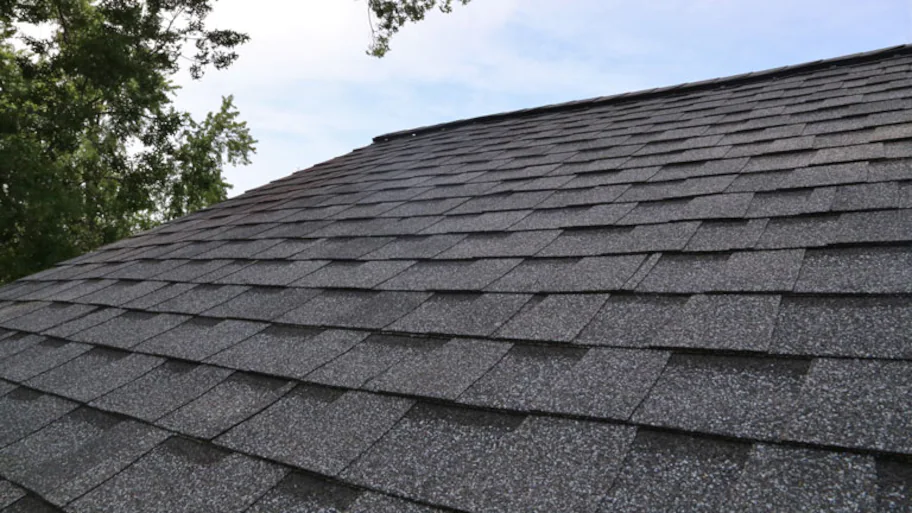Comparing Prices Amongst Roofing Companies in Gainesville Florida
Comparing Prices Amongst Roofing Companies in Gainesville Florida
Blog Article
Best Practices for Ensuring Correct Roofing Ventilation
Guaranteeing proper roof covering air flow is essential for the longevity and effectiveness of a roof. A balanced consumption and exhaust vent proportion, frequently 1:300, plays a crucial role, with consumption vents ideally put at the lower side of the roofing system for trendy air entrance and exhaust vents at the top for cozy air leave. Routine examinations to determine blockages and preserve clear air movement are critical. In addition, keeping insulation far from vents is essential to protect against air flow constraint. Understanding these fundamental components establishes the stage for even more in-depth insights right into installment and upkeep practices that can significantly enhance your roof's efficiency.
Understand Ventilation Fundamentals
Appropriately understanding air flow basics is important for ensuring the longevity and effectiveness of roof. Reliable air flow minimizes dampness build-up and temperature level extremes in the attic room, both of which can bring about considerable architectural damage over time. A well-ventilated roofing system assists in preventing usual concerns such as mold and mildew growth, timber rot, and ice dams, which can endanger the honesty of the roof materials and the underlying structures.
The key objective of air flow is to assist in the movement of air, permitting a consistent exchange between the outdoor and indoor atmospheres. This equilibrium is attained via a combination of intake and exhaust vents that interact to maintain optimal airflow. Consumption vents, usually located along the soffits or eaves, enable fresh air to enter the attic area, while exhaust vents, commonly located at or near the roofing system ridge, make it possible for warm, damp air to leave.
Trick aspects influencing the effectiveness of roofing system ventilation include appropriate placement, ample sizing, and making certain that both consumption and exhaust vents are unblocked. Routine inspection and upkeep are important to recognize potential clogs, damage, or inadequacies in the air flow system, consequently protecting the roof covering's performance and resilience.
Sorts Of Roofing Vents
Roof covering vents play a critical function in keeping reliable attic air flow and, by extension, the overall wellness of the roof covering system. Numerous kinds of roof vents are available, each with special benefits tailored to particular roof needs. Ridge vents, for instance, are installed along the roof's height, allowing warm, damp air to run away from the attic. They supply continual ventilation and mix perfectly with the roofline, making them both efficient and cosmetically pleasing.

Soffit vents are installed under the eaves and work in tandem with roofing system vents to ensure a balanced consumption and exhaust system. By enabling cooler air to get in from below, soffit vents help with the expulsion of warm air through upper vents. Gable vents, situated on the exterior wall surfaces of the attic room, offer an additional effective option, specifically in homes with gable roofing systems.
Assess Your Present Air Flow

Next, consider the age and condition of your roof materials and air flow components. Older systems may not abide with present building ordinance or may have deteriorated gradually, minimizing their efficiency. Conduct a complete evaluation to recognize any kind of signs of deterioration, such as rust, damage, or spaces that could endanger the system's performance.
In addition, gauge the attic room temperature level and moisture degrees. High temperature levels and humidity can indicate insufficient ventilation.
Installation Best Practices
Reliable setup of roof ventilation systems is critical for guaranteeing optimal efficiency and longevity. Proper setup starts with recognizing the certain air flow demands of the building and the roofing system it covers. This involves determining the right proportion of consumption to wear down vents, normally sticking to the 1:300 regulation, which stipulates one square foot of ventilation for every single 300 square feet of attic room floor area.

The positioning of vents is equally vital. Intake vents need to be set up at the roofing system's reduced edge, frequently in the soffits, to permit cool air to get in. Exhaust vents, on the other hand, should be installed near or at the roofing's height to help with the exit of cozy, damp air. This produces an all-natural airflow that assists keep temperature level and moisture balance within the attic area.
Seal all vent links diligently to stop air leaks and potential water infiltration. Usage high-quality materials and comply with producer standards to guarantee longevity and effectiveness. Additionally, incorporating ridge vents with baffles can substantially boost air flow performance by preventing wind-driven rain and snow from getting in the attic room.
Inevitably, exact installment of roofing ventilation systems alleviates potential issues such as mold development, ice dams, and structural damages, making sure the roofing's honesty and the structure's total wellness.
Routine Upkeep Tips
Consistency in upkeep techniques is basic to ensuring the lasting effectiveness of roofing air flow systems. Normal assessments are vital, ideally carried out biannually-- in the springtime and loss. During these examinations, make sure that vents are free of debris, nests, and other blockages that could hinder airflow. Check for any kind of signs of wetness buildup or mold and mildew, as these can indicate inappropriate ventilation or leakages (roofing companies gainesville florida).
Cleaning the vents is another vital job. Use a soft brush or a vacuum to remove dust and particles from consumption and exhaust vents. Be careful not to damage the air vent displays or louvers during the procedure. Additionally, inspect the attic room for any kind of indicators of water damages, which might compromise the integrity of the roof.
Appropriate insulation is just as vital. Ensure that attic insulation does not obstruct why not try these out the vents, as this can badly restrict air flow. If any insulation has changed or worked out, reposition or replace it to preserve an effective barrier.
Lastly, replace any kind of harmed or missing out on components promptly. Broken vents, cracked shingles, or worn-out blinking can all add to insufficient air flow and needs to be addressed right away. Routine upkeep makes certain that the roofing check that air flow system functions optimally, thus prolonging the life expectancy of the roof itself.
Verdict
Making sure proper roof ventilation is extremely important for keeping the performance and toughness of a roof. Adherence to the 1:300 consumption and exhaust air vent ratio, combined with the critical positioning of vents, is vital. Regular biannual assessments, debris cleansing, and making sure insulation does not obstruct air movement are crucial techniques. Carrying out these ideal techniques will foster a well-ventilated roof, consequently minimizing possible problems related to moisture build-up and extreme warm, ultimately lengthening the roofing system's lifespan.
A balanced consumption and exhaust vent proportion, generally 1:300, plays an essential role, with intake vents preferably placed at the lower edge of the roof covering for great air entrance and exhaust vents at the top for cozy air exit. Intake vents, normally situated along the eaves or soffits, enable fresh air to get in the attic room room, while exhaust vents, often located at or near the roof covering ridge, enable warm, humid air to leave.
Soffit vents find more information are set up under the eaves and job in tandem with roofing vents to make certain a balanced intake and exhaust system. By allowing cooler air to get in from below, soffit vents help with the expulsion of warm air via upper vents. Adherence to the 1:300 intake and exhaust vent ratio, combined with the critical positioning of vents, is important.
Report this page